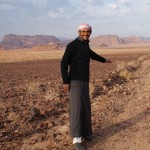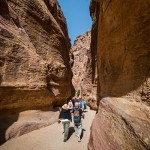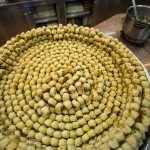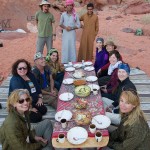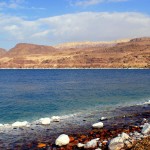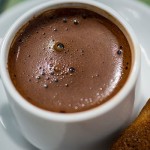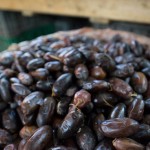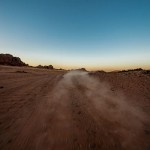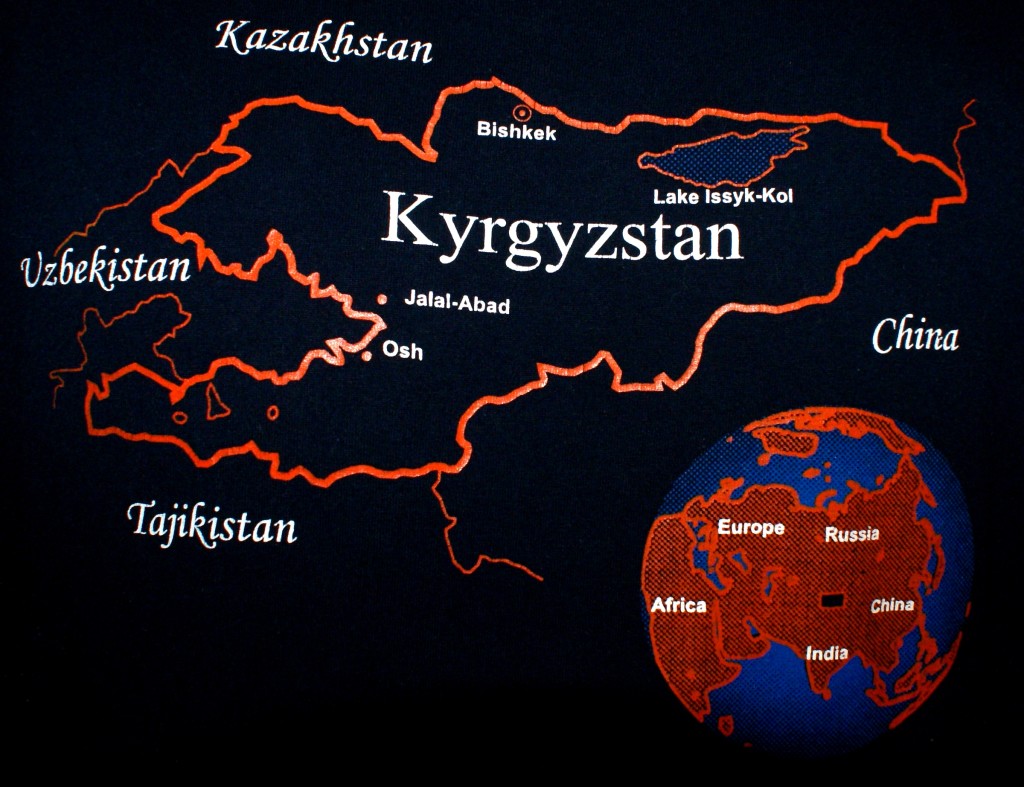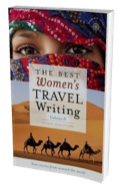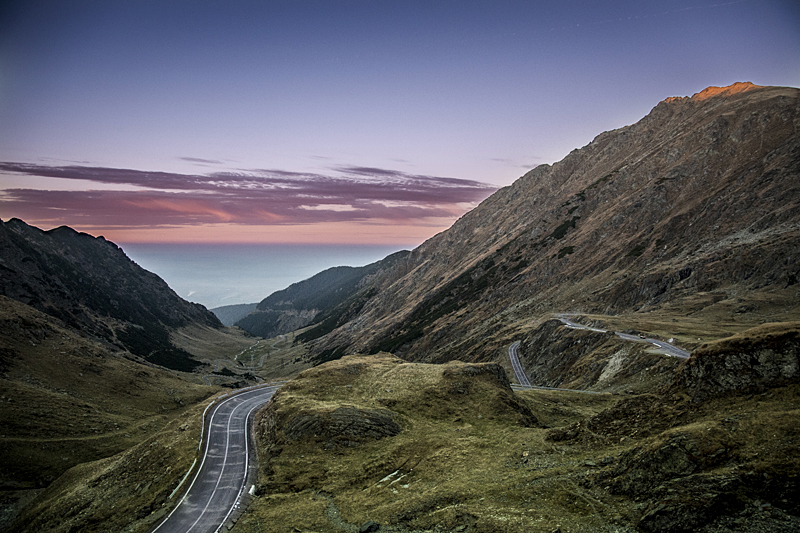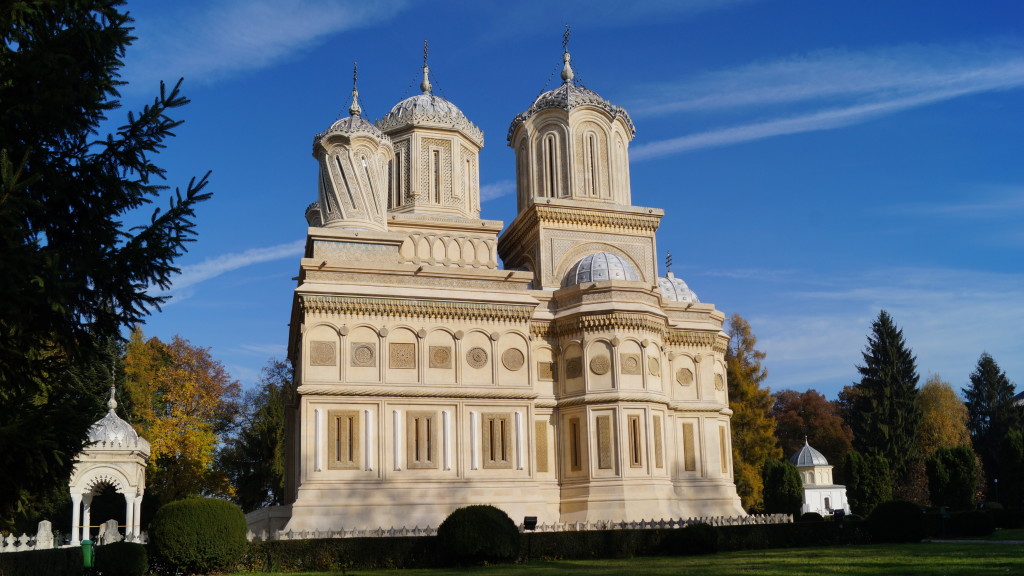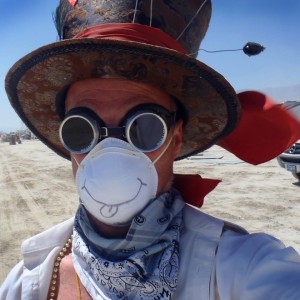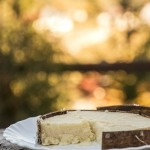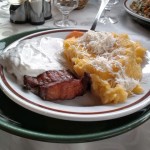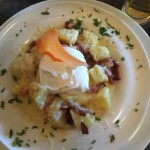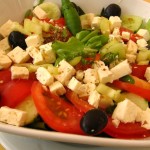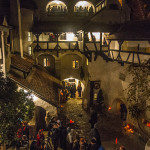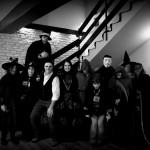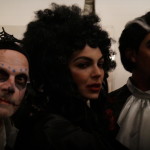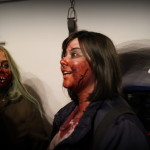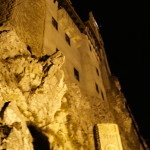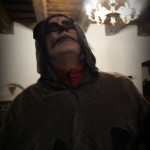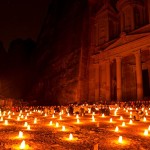
We’ve made the reservations, and you just need to bring your appetite for our epic epicurean adventure crossing the Hashemite Kingdom of Jordan, from the Dead to the Red Sea and back. Petra, Indiana Jones, Wadi Rum desert, Lawrence of Arabia, jeep tours, camping with Bedouin, night photography, camels, a hot air balloon ride, floating in the Dead Sea (you couldn’t sink if you tried), scented spice markets, an orgasm of food, hookah pipes, wine & something far stronger–this is just a taste of what you’ll be experiencing.
Scroll down for full itinerary, prices, and your hosts’ biographies.
Expedition Dates: November 6-13, 2019
Group Size: maximum 12 (there are just two spots left)
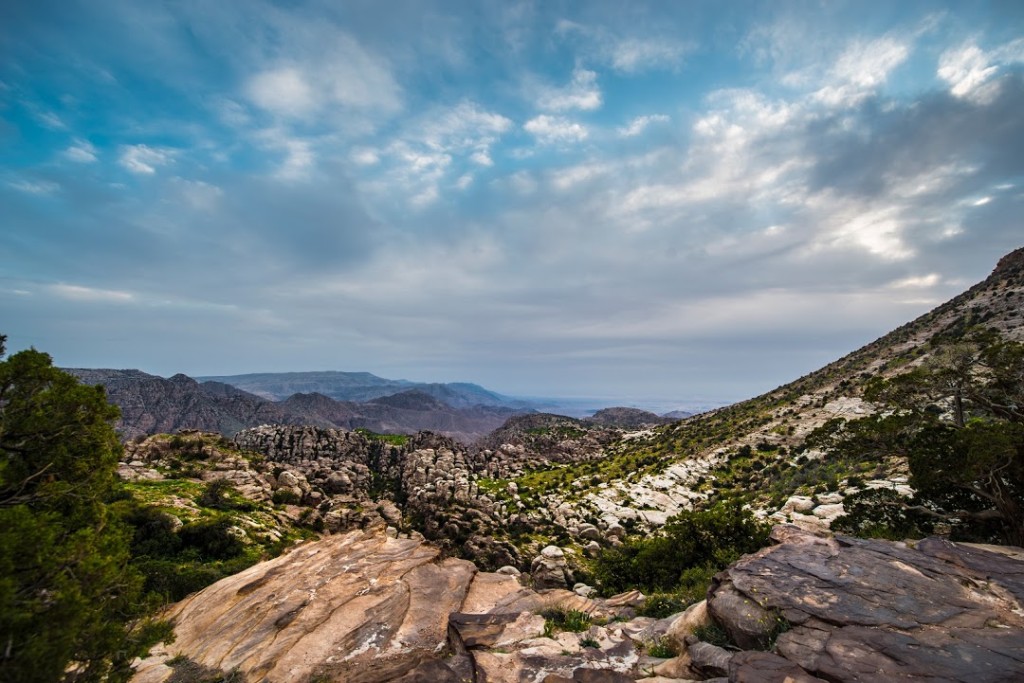
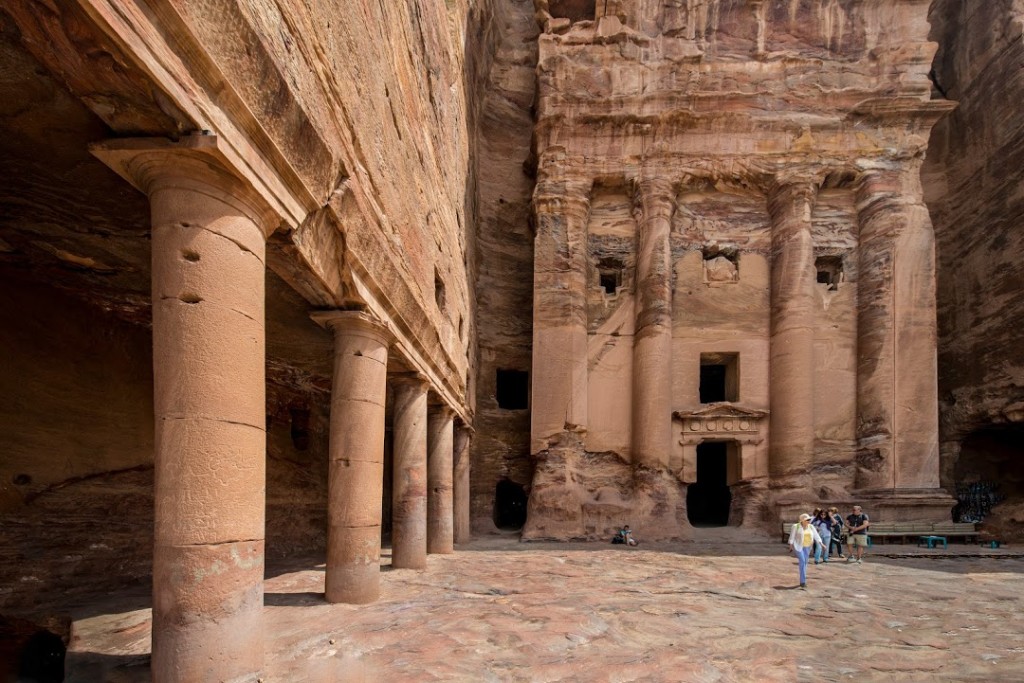

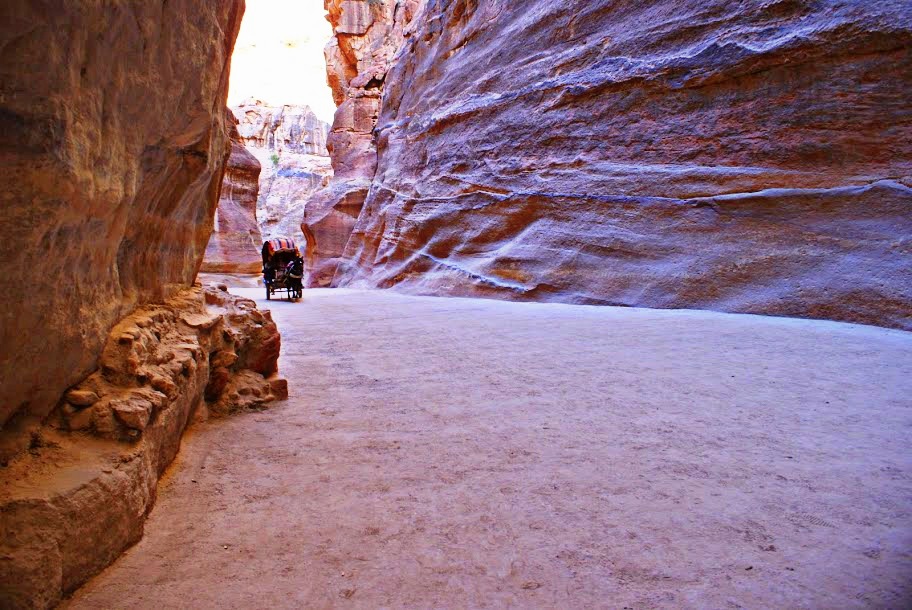
Raiders of the Last Platter – Jordanian food adventure – itinerary
Wednesday, November 6, Day 1: Welcome to Amman! After you’ve checked into our hotel in the heart of downtown Amman, at the very edge of the historic old town, we’ll start our epicurean adventures in the suq at a restaurant famous for its falafels and hummus, followed by indulging in kunafa at a long-time family-run sweet shop, and then we’ll venture into an infamous hookah/shisha lounge to smoke pipes (or if you’d prefer, you can just take photos of your new friends smoking) and to enjoy Jordanian wine and sample potent Araq (or you can just have tea or coffee)–but we’re not done yet, because then we’ll be going to a bakery so we can counteract the effects of the potent Araq. We’ll be swimming in the Dead Sea tomorrow, but don’t worry; you can’t sink.
Dinner, Tastings, Overnight in Amman*** (with 4.5 star reviews, wifi)
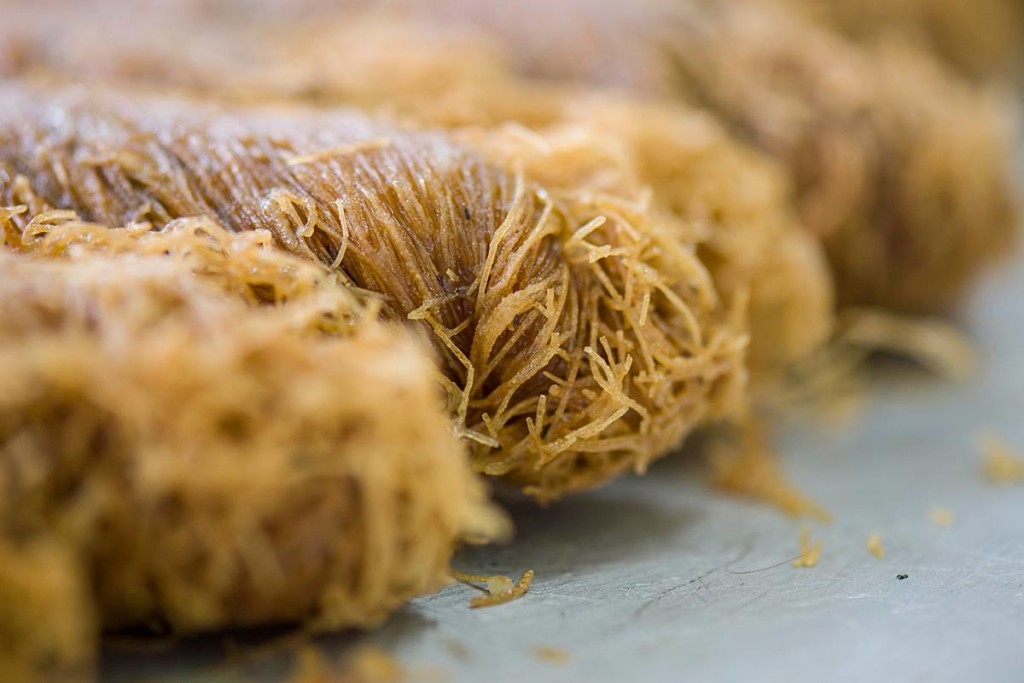
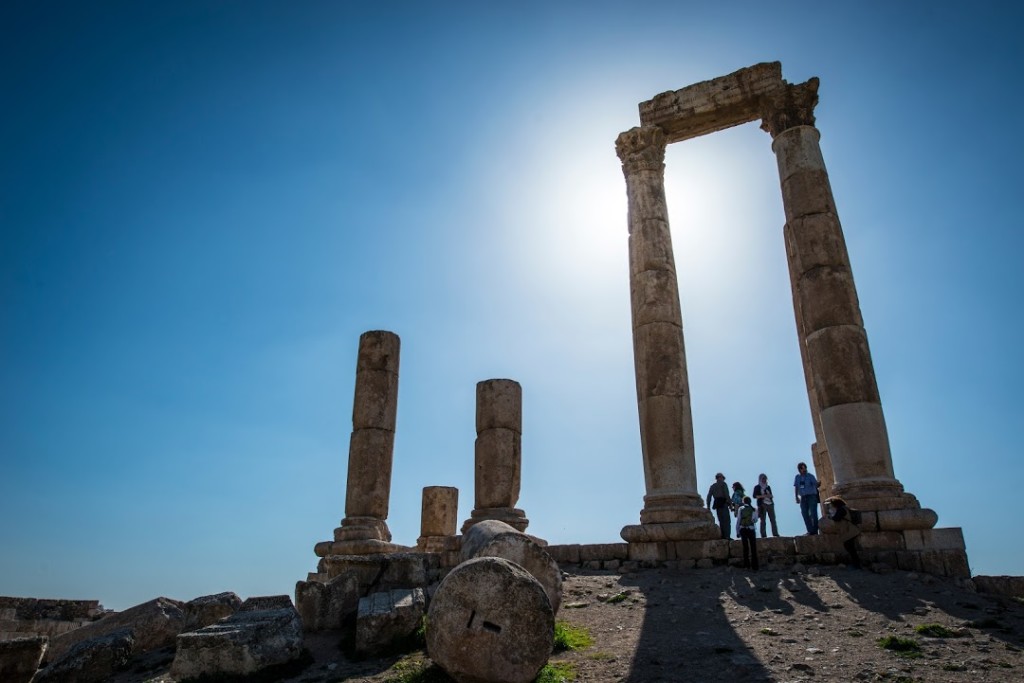
November 7, Day 2 – Dead Sea and Petra – for someone somewhere this is a day of multiple bucket list items to be ticked: After breakfast we’ll drive to the Dead Sea, of which the surface and surrounding shore are about 1,400 feet below sea level. This is the lowest place on land on the planet. We’ll change into our swimsuits to float and soak in the salty waters. The water is 9.6 times saltier than the ocean making a human being insanely, hysterically, buoyant like a cork. We’ll lunch at the seaside before driving to Petra, stopping on route for a baklava break.
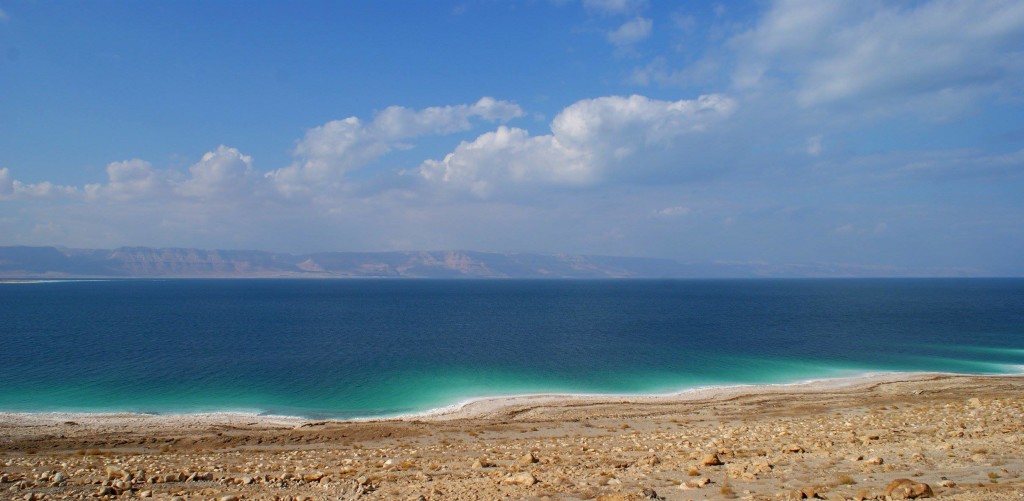
We’ll check in at our hotel right by the entrance to Petra, the sandstone, rose city, which is far more vast than you probably anticipate, since many have only seen a few of the most famous buildings on documentaries, in books, and in movies– Petra, an archaeological wonder, is about 60 square kilometres. Before our candlelit adventure into Petra at night, we’ll have a hands on culinary experience using local fresh ingredients. For millennia Petra was the heart and soul of the spice trade, and this evening a family of local chefs will guide us.
Breakfast, Lunch, Baklava, Dinner, Overnight Petra*** (pool, wifi) – we’ll be spending two nights at this hotel
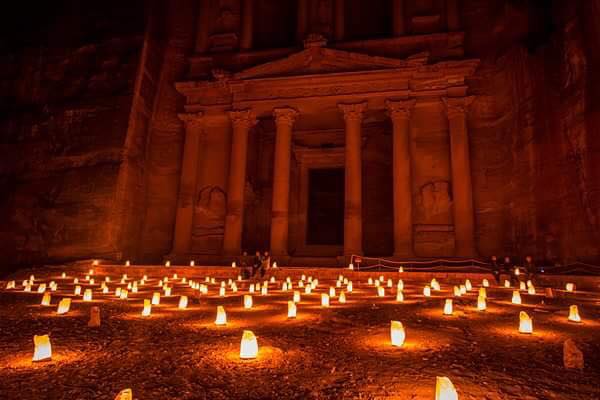
November 8, Day 3 – Petra: This morning we’ll time our walk through the siq to catch the perfect light for photos. You’ll quickly realize why this ancient city is a World Wonder. We’ll have lunch at one of the restaurants within the Petra site. If anyone gets tired during the day, you can hire a horse or camel or donkey to get out of Petra and re-visit after a nap.
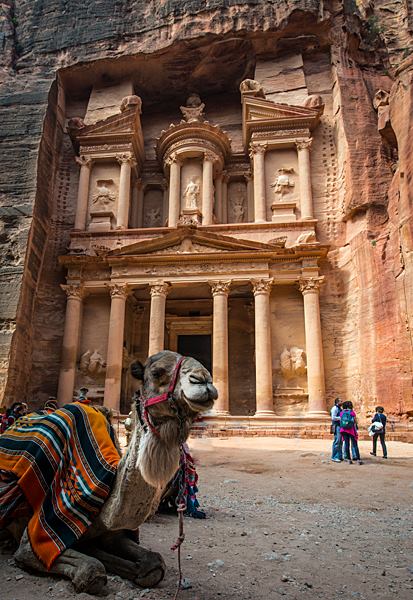
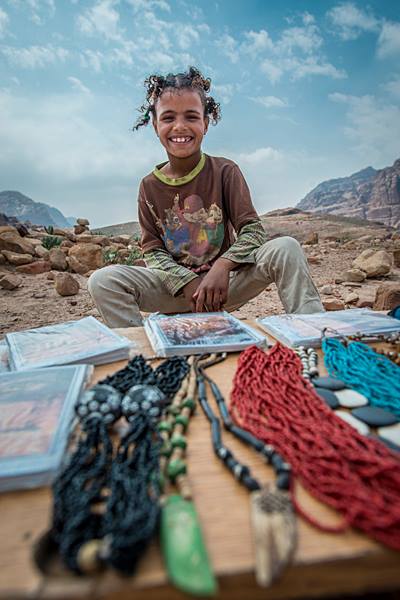
We’ll freshen up before dinner and then we’ll head out to a local restaurant, and for any who aren’t totally wiped after we dine, we’ll go to the oldest bar in the world which is inside a cave that is a 2000-year-old Nabataean tomb!
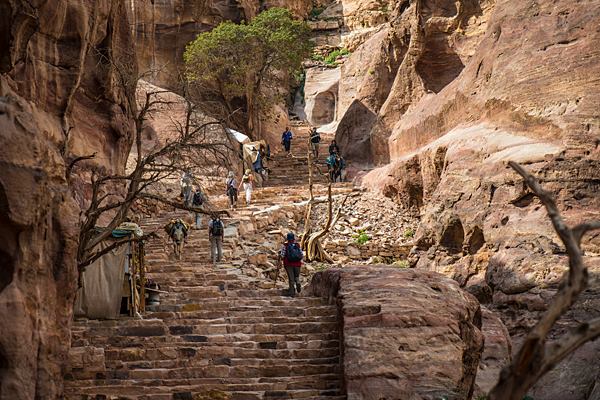

Breakfast, Lunch, Dinner, Overnight Petra Palace
November 9, Day 4 – Dana nature preserve – hiking and camping:
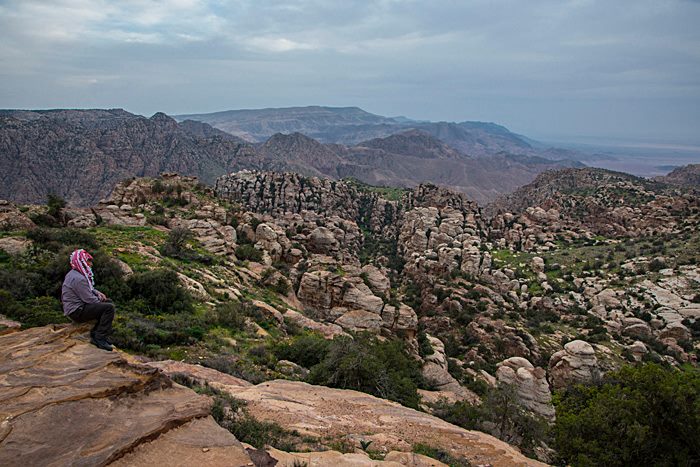
Today we’ll transfer to meet our local adventure guide at Feynan and will hike and scramble over rocky terrain along the rim of Wadi Shagg al Kelbe, and round the steep slopes of Wadi Dana. The trail leads into the terraced gardens of Dana Village, where villagers cultivate fruits and herbs, and where you can see old Ottoman houses and traditional lifestyles. Tonight we’ll camp in the 380 square kilometre biosphere.
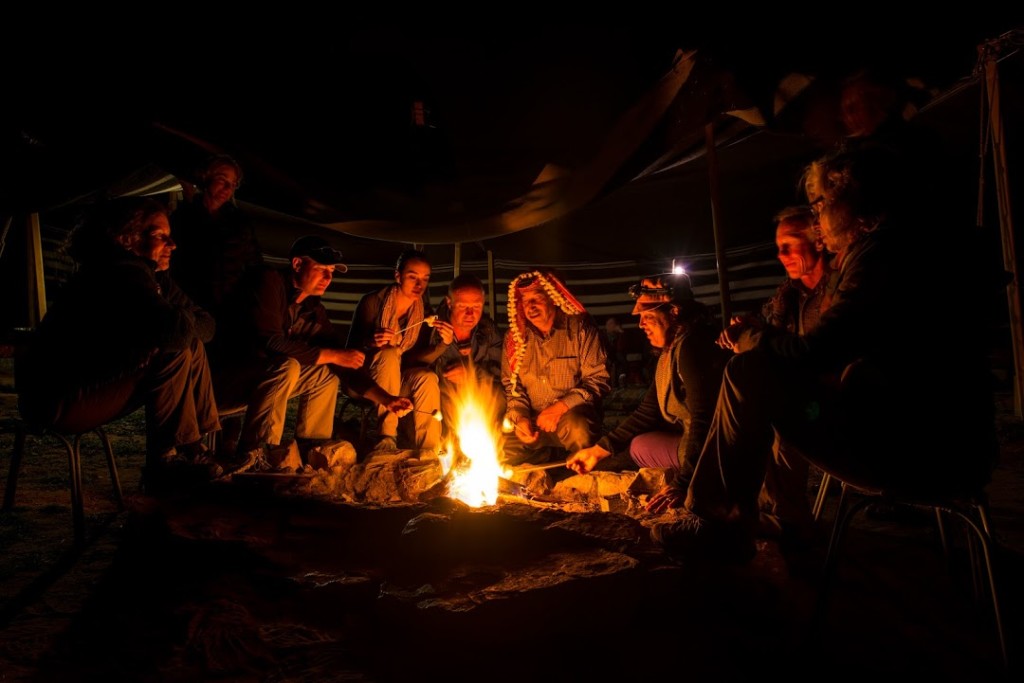
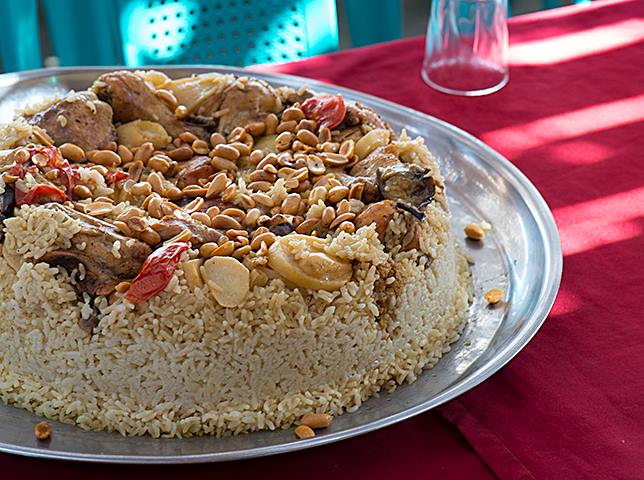
Breakfast, Lunch, Dinner, Overnight camping
November 10, Day 5 – Wadi Rum, glamping with Bedouin – eat like a sheik – it’s Lawrence of Arabia time: This afternoon Salem and his team will greet us in Rum village and will drive us across the desert wilderness of Wadi Rum to to their camp where we’ll be spending the next two nights. As we drive across the desert sands it might remind you of the majestic sweeping landscape shots from Lawrence of Arabia because that’s exactly where we’ll be, in the footsteps, or camel tracks, of Lawrence (and Peter O’Toole too).
Our Bedouin campsite is at a secluded location deep in the desert. We’ll settle down and will feast on dishes such as ‘Zarb’—a traditional Bedouin dish of meat and vegetables cooked in a sand oven. We’ll gather around the campfire, banter with our hosts and will become acquainted with the extraordinary people who are the Bedouin of Wadi Rum.
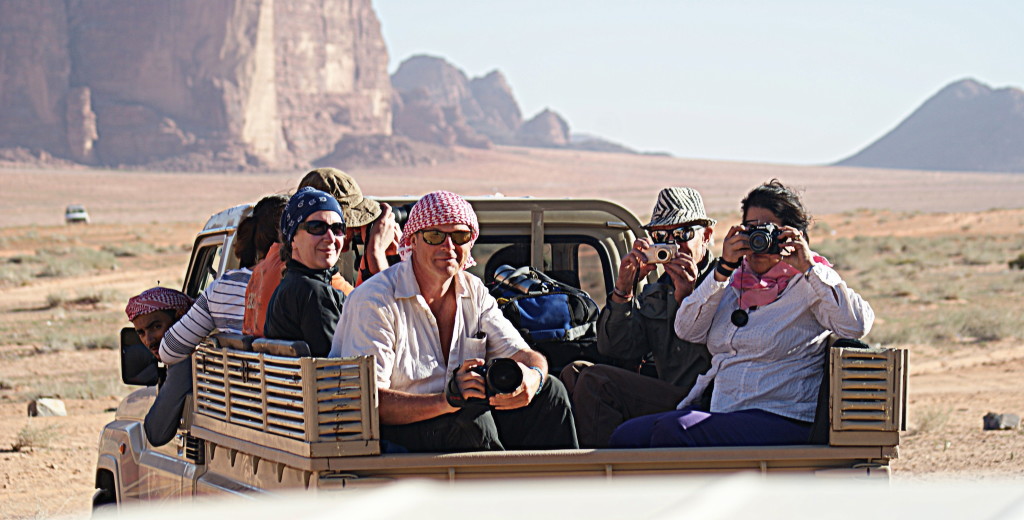
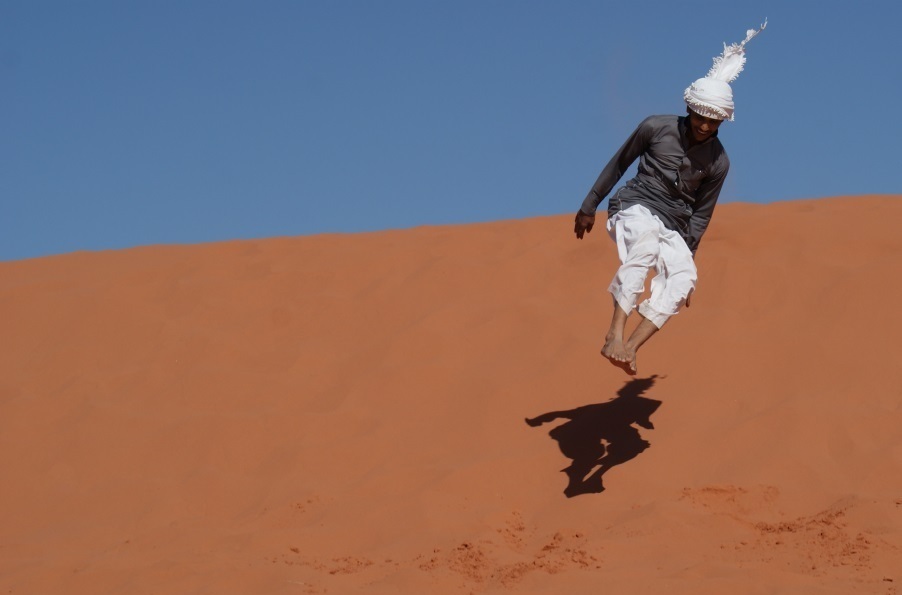
Sleeping in the desert: you’ll have the option of snoozing in your traditional Bedouin tent made of goat hair, or you can take your mattress out for a night under a starry sky with zero light interference.
Breakfast, Lunch, Dinner, Overnight in Bedouin camp
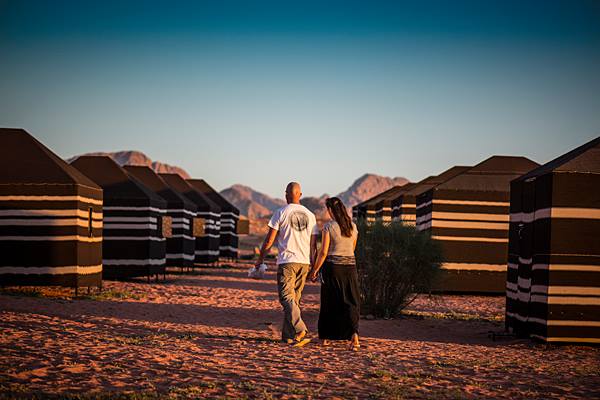

November 11, Day 6 – camel trek and traditional lunch with Bedouin family at their home:
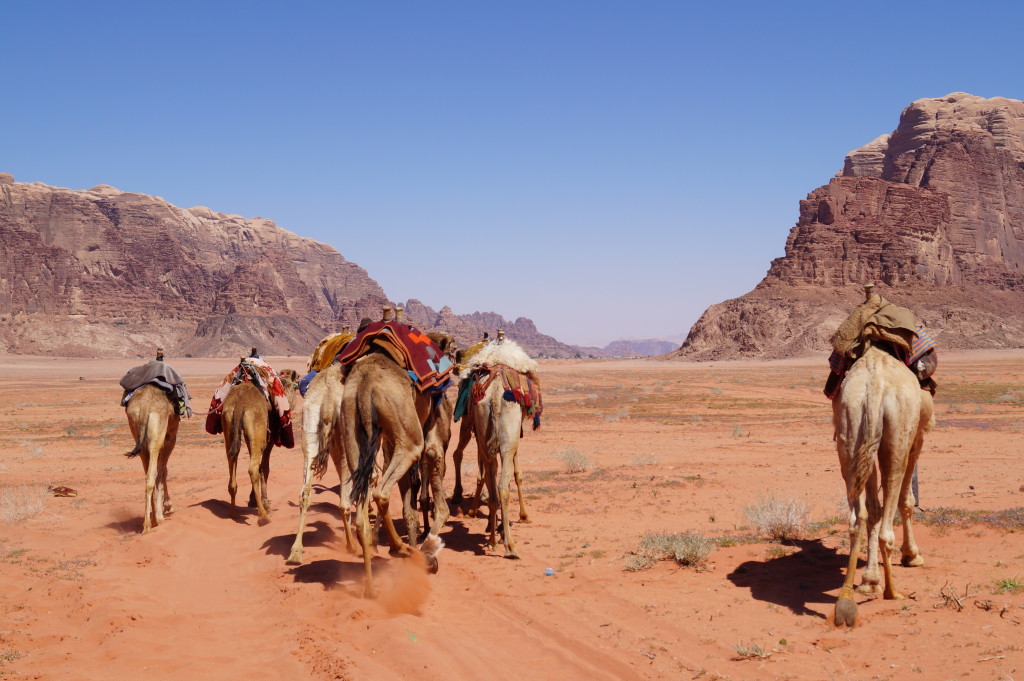
After breakfast we’ll ride camels to Rum village where we’ll partake in an authentic lunch experience. This is going to be full-on cultural immersion, and it’s an honour for us to have been extended this invitation.
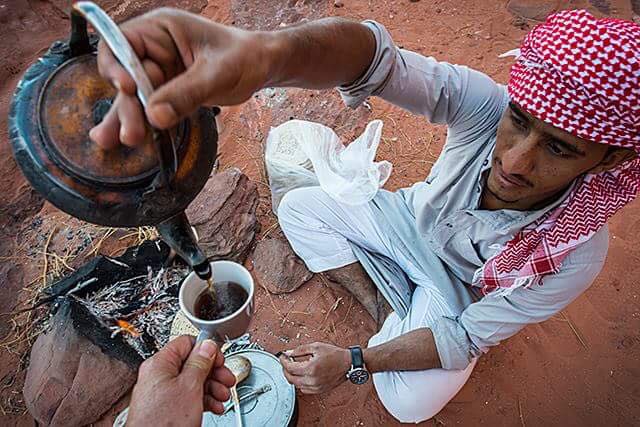
Breakfast, Lunch, Dinner, Overnight Bedouin Camp
November 12, Day 7 – hot air balloon ride over Wadi Rum, swimming in the Red Sea, old suqs of Aqaba:
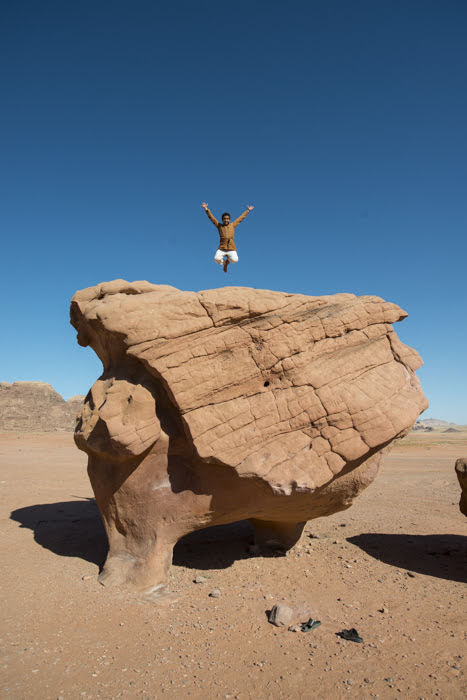
We will rise early this morning for our hot air balloon adventure.
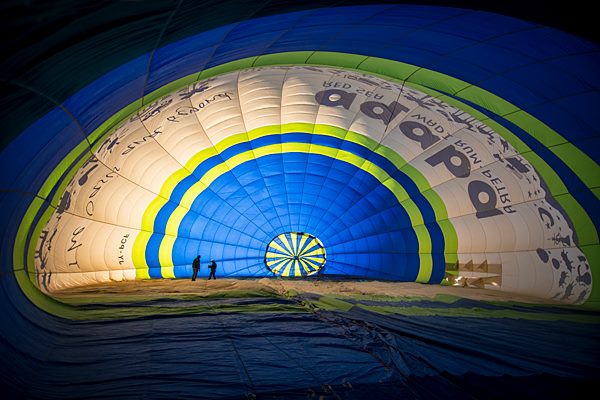

Then we’ll drive to Aqaba to swim in the Red Sea.
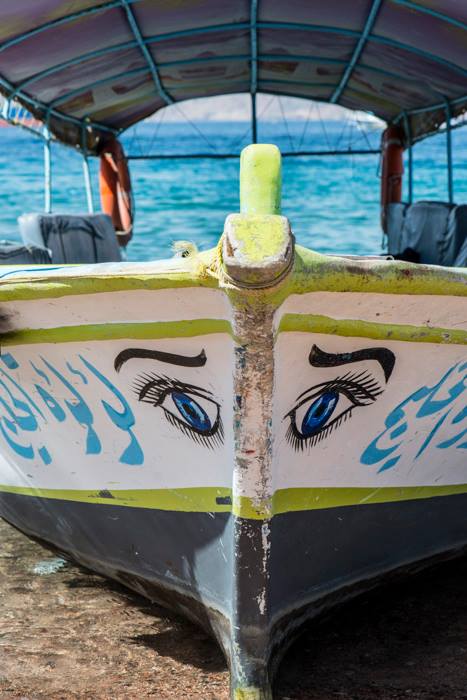
Then we’ll lunch and sniff our way through spice shops in the old suqs of Aqaba before heading to ancient Madaba and to your host’s favourite restaurant in this town once ruled by both the Roman and Byzantine empires.
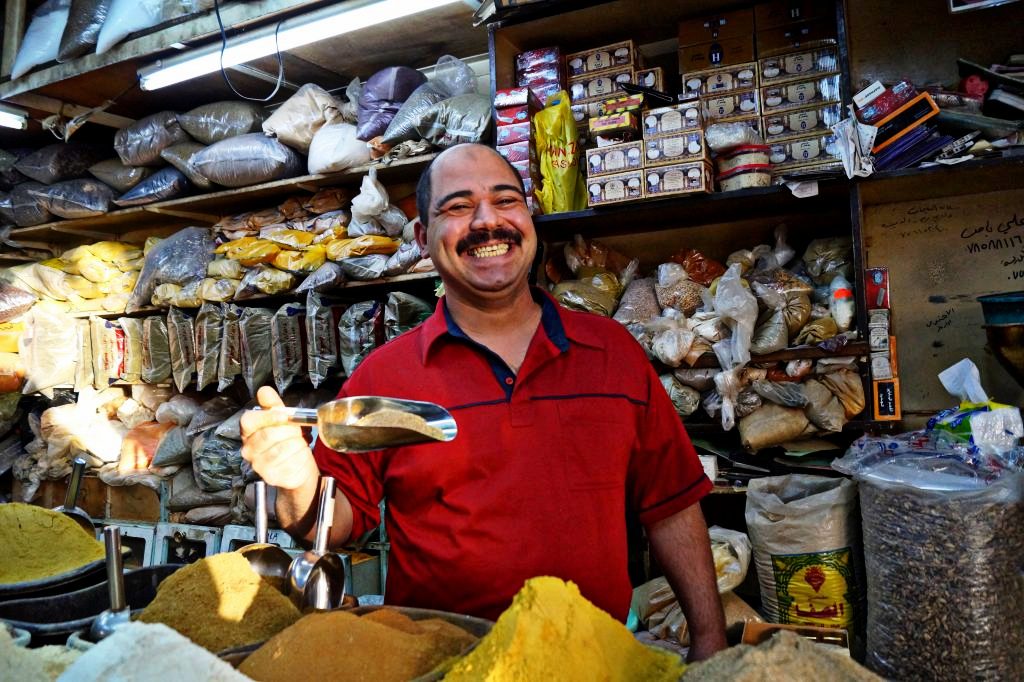
Breakfast, Hot Air Balloon Ride, Lunch, Dinner, Overnight in Madaba (pool, wifi, beautiful bar)
November 13, Day 8: – Breakfast, then farewell, and if you are leaving Jordan today we will transfer you to the airport. The hotel is about twenty minutes from the airport.
Prices, Inclusions, and Exclusions followed by your hosts’ bios
Price per person is US$2660 in double room accommodations. Single price supplement for solo travellers requesting a private room is US$160 (so if you snore, or are a light sleeper, or get farty from falafels, it’s money well spent).
A $350 USD deposit per person reserves your spot and can be made by credit card. This of course is subtracted from your total. The payments are broken down into three instalments.
Please contact us with questions or to make a booking at: writers-expeditions@mail.com (and also CC kirstenkoza@gmail.com to make sure we get it). You can also reach us in a private message from our Writers’ Expeditions Facebook page. We respond quickly so if you don’t hear back from us, please check your spam bin.
Inclusions:
Accommodation: 4nts in 3-star hotels, 2nts in a Bedouin camp, and 1nt in an eco camp
Meals: all meals while on tour – 7 Breakfasts, 6 Lunches, 7 Dinners – plus treats throughout the trip
Guides: licensed English-speaking Jordanian guide throughout the trip, local hiking guide in Dana, local Bedouin guides in Wadi Rum
Digital professional photographs of your adventure and assistance with yours
Transportation: in a private air-conditioned bus, by camels, hot air balloon, and open-air military-style Land Cruisers in Wadi Rum
Entrance Fees: Dead Sea beach access, Petra 2-day pass, Wadi Rum, Aqaba beach access
Activities: photography, sightseeing, tastings, camping, hiking, swimming, culture, cooking class, hot air balloon (should weather be unsuitable for a hot air balloon ride this will be refunded), and for anyone interested in travel or memoir writing – your host is always available to give you tips
Exclusions:
Flights to Jordan
Jordanian visa (single entry) which you obtain at the airport and is 40JD (about 56USD)
Travel Insurance
Drinks (except where listed in the itinerary)
Tips to local Jordanian guides
Your Hosts and Expedition Designers Described by Kirsten
 Kirsten Koza: I’m your host and expedition designer and am a professional adventure travel writer, author, humourist and journalist. I ruthlessly pretest the Writers’ Expeditions trips to find the best local guides, tour operators, and unique adventures, so you can have a great experience. I’ve had more than seventy stories published in books, magazines, and newspapers around the world, on topics as varied as going inside the largest Syrian refugee camp, bullfighting, cannibalism, tornado chasing, mountain biking, dildos, dictators, Putin, gluten, mutants, and politics. I’ve even made the front page of Kyrgyzstan’s national newspaper. I’m the author of Lost in Moscow: A Brat in the USSR and edited the Traveler’s Tales anthology Wake Up and Smell the Shit: Hilarious Travel Disasters, Monstrous Toilets, and a Demon Dildo.
Kirsten Koza: I’m your host and expedition designer and am a professional adventure travel writer, author, humourist and journalist. I ruthlessly pretest the Writers’ Expeditions trips to find the best local guides, tour operators, and unique adventures, so you can have a great experience. I’ve had more than seventy stories published in books, magazines, and newspapers around the world, on topics as varied as going inside the largest Syrian refugee camp, bullfighting, cannibalism, tornado chasing, mountain biking, dildos, dictators, Putin, gluten, mutants, and politics. I’ve even made the front page of Kyrgyzstan’s national newspaper. I’m the author of Lost in Moscow: A Brat in the USSR and edited the Traveler’s Tales anthology Wake Up and Smell the Shit: Hilarious Travel Disasters, Monstrous Toilets, and a Demon Dildo.
 Christopher Campbell: once again I’ve invited one of my favourite photographers (and one of the best travel companions you’ll ever meet) to lead our photographic adventures and share a lifetime of tips, tricks & technique. You have probably seen his images displayed on TV’s Food Network cooking shows or in publications as varied as Chatelaine, Spa Magazine, or Harper Collins cookbooks–and most definitely in ads–he’s the one you can blame for making you crave Absolut Vodka, Kahlua, that dew dripping glass of Gordon’s gin, Florida oranges, late night fast food at Wendy’s or McDonald’s (blame him for that), or test driving a Mercedes—that’s Christopher Campbell’s fault too. This is the seventh photography expedition he’s hosted for Writers’ Expeditions and his second for us in Jordan.
Christopher Campbell: once again I’ve invited one of my favourite photographers (and one of the best travel companions you’ll ever meet) to lead our photographic adventures and share a lifetime of tips, tricks & technique. You have probably seen his images displayed on TV’s Food Network cooking shows or in publications as varied as Chatelaine, Spa Magazine, or Harper Collins cookbooks–and most definitely in ads–he’s the one you can blame for making you crave Absolut Vodka, Kahlua, that dew dripping glass of Gordon’s gin, Florida oranges, late night fast food at Wendy’s or McDonald’s (blame him for that), or test driving a Mercedes—that’s Christopher Campbell’s fault too. This is the seventh photography expedition he’s hosted for Writers’ Expeditions and his second for us in Jordan.
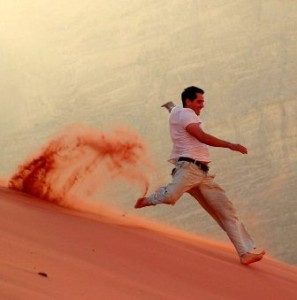 Rakan Mehyar: After first doing a Dead to Red Sea mountain biking tour with Rakan Mehyar’s Jordanian company, and falling in love with both the place and his team, I then asked him to organize an epic eating fest and expedition (with no bicycles), which we first ran in 2014. Rakan received his training at the Cesar Ritz in Switzerland and thus was the perfect man to arrange our activity packed adventure.
Rakan Mehyar: After first doing a Dead to Red Sea mountain biking tour with Rakan Mehyar’s Jordanian company, and falling in love with both the place and his team, I then asked him to organize an epic eating fest and expedition (with no bicycles), which we first ran in 2014. Rakan received his training at the Cesar Ritz in Switzerland and thus was the perfect man to arrange our activity packed adventure.
And we now leave you with some more images from our past adventures in Jordan and hope you can join us in 2019.

Mare’s Milk, Mountain Bikes, Meteors & Mammaries
A nipply night in nomad’s land.
By Kirsten Koza
(First published in the book, The Best Women’s Travel Writing, Volume 8: True Stories from Around the World)
“Oh, no, Kirsten!”
My Kyrgyzstani guide’s warning came too late, and stepping in poo had never felt so good. My cycling shoe sank into the dreadful yet luxurious warmth of fresh animal dung. I was chilled to the point where I was actually lingering ankle-deep in feces, by choice.
Yena shone the light of her cell phone, its only feature that was still working, onto the molten mound enveloping the bare skin of my lower leg. The droppings looked like something a brontosaurus might have deposited. A meteorite seared across the night sky, so close that you could actually hear it crackle as it hissed down the vertical gorge to the Chong-Kemin valley.
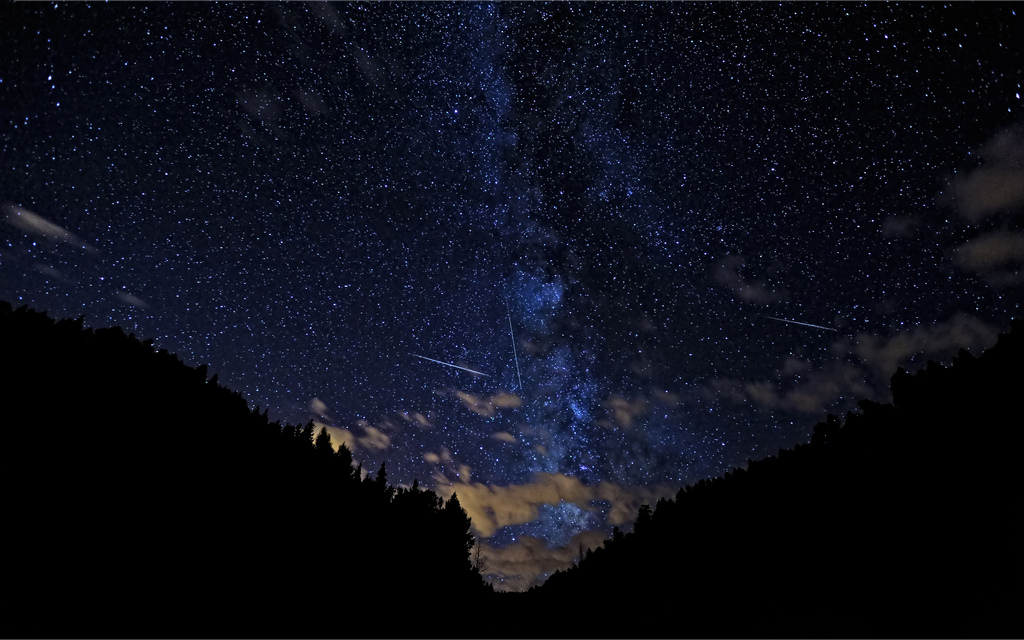
The point of light from Yena’s phone caught me in the eyes. When I’d first met her, yesterday, after traveling thirty-six hours from Canada, I’d told her that I had two irrational phobias. The first one—fear of the dark—I fabricated as an excuse for not wanting to climb the unlit, steep, winding stairs of an eleventh-century minaret. I wasn’t worried about the lack of lighting; I was being lazy. The second phobia—which I’d added to brighten the mood after she looked disappointed that I didn’t want to go up the tower—was real: I was terrified of meteorites. I was seriously scared of being struck by a shooting star. I’d lie in bed at night imagining them out there in space.

Now here we were on a mountain, in the dark, unable to make it across the pass with our bikes because a fresh rockslide had strewn unstable boulders and scree for several kilometers in every direction, including on the slope directly above us. We’d had to turn back and were descending on foot from an altitude of four thousand oxygen-deficient meters above sea level, as night smothered Chok-Tal Mountain. The blinding dark was being shredded by the Perseid meteor shower—shooting stars so close it seemed I could even smell their trails of smelting iron and sulfur. I snuggled into the poop.
“Yena, why did the old Kyrgyz nomad ask me if I was afraid of wolves?”
“I no know why. Is very strange.”
It was weird. It was the only thing he’d communicated, as we’d left his family’s yurt in the afternoon to head up over the mountain chain. He had a wind-whipped and sun-lashed face, a riding crop, a long white moustache, and a traditional white felt hat that made him look like he was wearing a small yurt on his head.
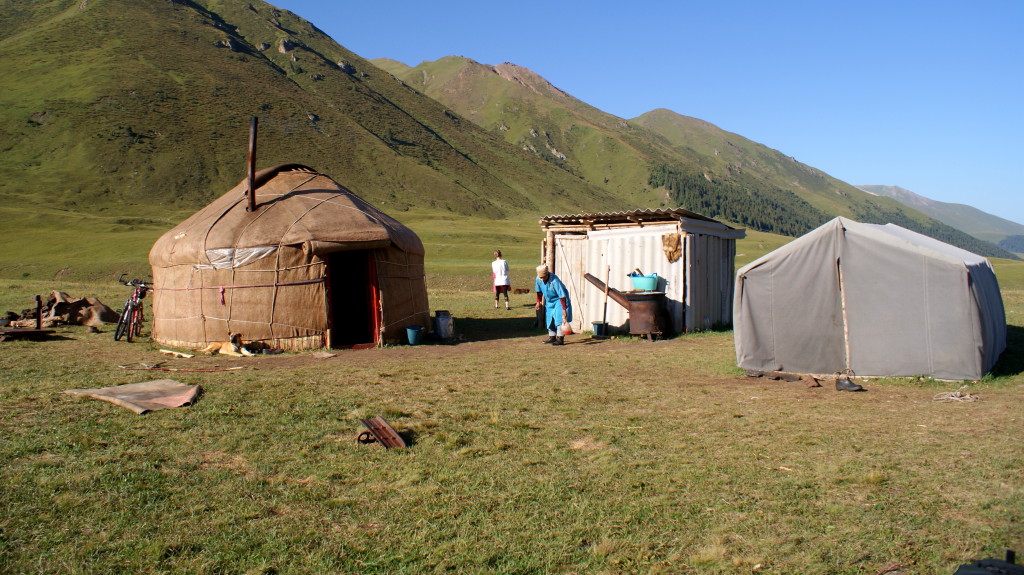
“I’m not scared of wolves,” I said to Yena as she skidded away down the rocky trail beside her bike.
“I know, you say dis already.” Just a few feet ahead of me, and she was invisible.
Suddenly, she shrieked. A clatter of falling rocks started above us and immediately bounced and slid past on all sides. Stone and shale tumbled over the sheer precipice.
I screamed. I didn’t know what was going on, but screaming felt right.
“A horse!” Yena cried.
“Oh, God. Did it go over the edge?”
“It go off.” My guide was somewhere near the edge of the gorge. I couldn’t see her.
“It went off the edge?” All I could hear were the glacial rapids roaring thousands of meters below.
The light from my twenty-two-year-old guide’s phone darted around the nearby mountainside. There was nothing to see in its beam but rocks balancing on good will.
I was too old for this.
Wait, did I seriously just think that? I was furious with myself for even entertaining such a thought. I was not too old for this. I was forty…something. Mid-forties. I’d been lying about my age, saying I was older than I was, for so long that I’d actually need to do the math to figure out my real age. I had never understood why movie stars claimed to be younger than they were. If you lie up in age, then people are amazed by how good you look. But today’s mistakes were those of a twenty-two-year-old. I’d made such errors in judgment decades ago and there was no excuse for repeating them at forty-five-ish.
We had no water, food, supplies, flashlights, or gear of any kind. Everything we needed was in our support vehicle with our driver, Alexey, and my Kyrgyz cultural guide, Cholpon. Everything that could save our lives was on the other side of this snowy mountain range, a six-hour car ride away—if we had a car. When the sun vanished, the temperature had plunged below freezing, and I was wearing shorts and a t-shirt. I’d suggested turning back hours ago, when I’d begun to suspect that I’d misunderstood the plans for the day; I didn’t want to get caught high in the mountains at night.
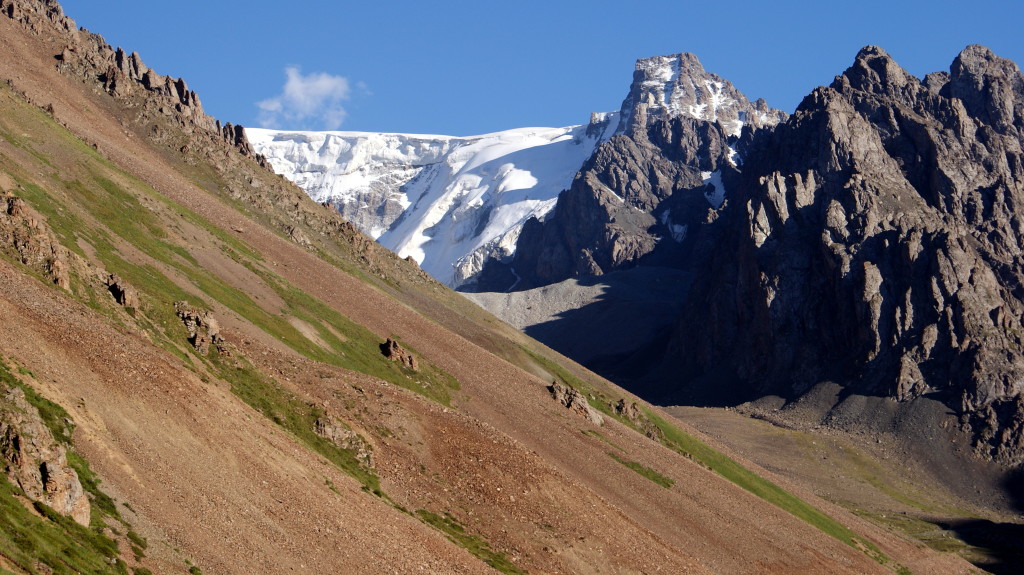
“Hello, Alexey, hello….” Yena tried her useless walkie-talkie and her useless cell phone for the hundredth time. I knew she was just putting on a front for me. She was fully aware that there was no cell service here, and the transceiver radios were only good if you had a line of sight with the other person. “Hello…” Static.
There had been a tense fight last night at camp between my guides. Alexey had said—in English, for my benefit—“The lady is tired and she has come from living at sea level. We are too high in elevation. Change tomorrow’s ride. Do a small ride, Yena. Don’t cross the mountains.” I agreed with Alexey. Then the arguing continued in Russian, the common language of the three guides supporting my bike trip across Kyrgyzstan.
I didn’t normally travel with a team of babysitters. I’d hired them all before arriving in Bishkek, back when I assumed I’d have a group of cyclists accompanying me. But it turned out nobody else in the world wanted to come to Kyrgyzstan, mostly because of a recent revolution and government overthrow and killings. I’d even received death wishes from an Arizona prison guard on an online mountain biking forum for daring to invite Westerners to a Muslim country. He’d lusted for guns pointed at my head.
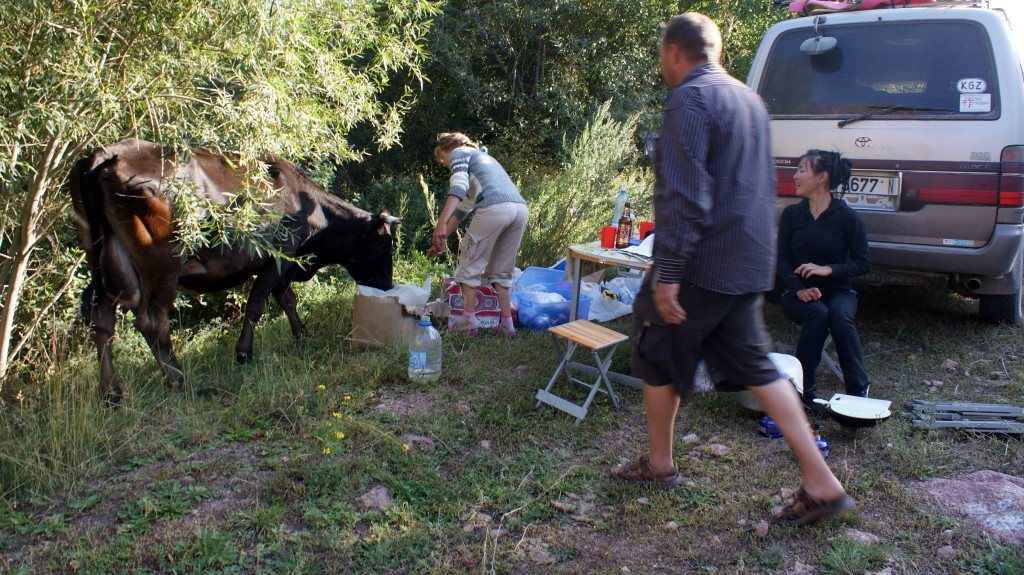
Maybe Yena hadn’t understood Alexey’s English when he said we shouldn’t cross the Celestial Mountains. She spoke Russian and French. I could barely understand a word of her English and none of her French, and I was beginning to think she didn’t understand my English, either. Or perhaps she’d won the argument, and nobody thought to tell me. But when we’d left so late in the day, and when I’d watched her hand two bottles of water back to Alexey, complaining they were too heavy – these two clues had indicated we were doing a shorter, easier ride, and not crossing the mountains. She’d even thrown out our food, at which point I was completely certain we’d just be doing a quick jaunt.
Four hours later, when I was vomiting horse milk, clambering over rockslides, carrying, pushing and dragging my bike continually upward, I realized we were doing the full mountain crossing.
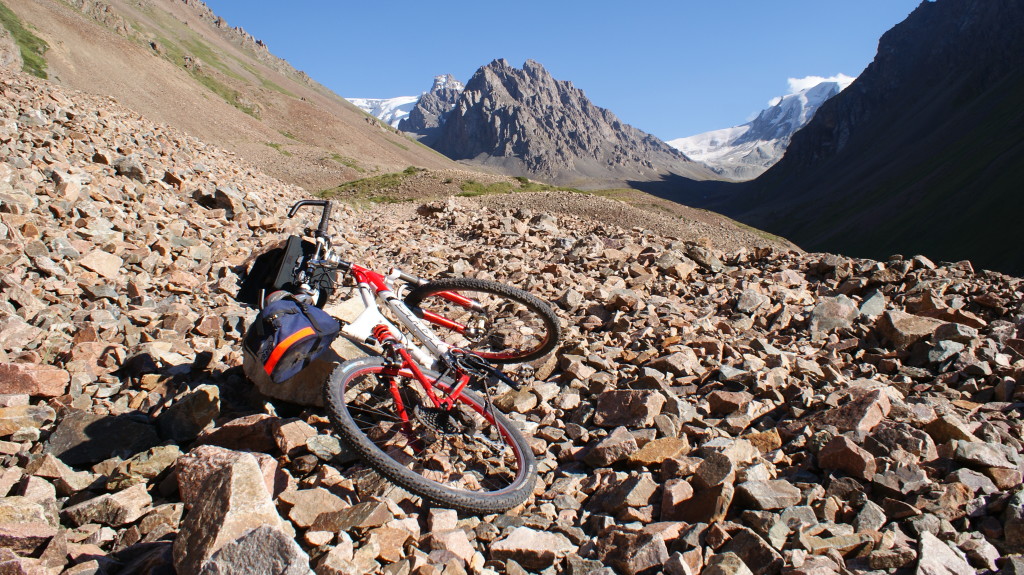
Now, one foot in front of the other, defeated, we were feeling our way back down the mountainside, trembling with cold and muscle fatigue. The incline was so vertical that I was using my bicycle brakes to help slow my pace. I winced as a rock tore the skin off my shin, and again as a shooting star whizzed in front of me. I didn’t make a wish. I wasn’t superstitious. I was just fully freaked out.
The nomads, though—they were superstitious. The Kyrgyz woman who’d served us fermented mare’s milk and bread with jam and clotted cream in her yurt this afternoon had stared at my upside-down bread on the table and shot me a look of horror. I’d also pointed with my foot at her adult son. I was showing him the hardware that attached my shoe to my bike pedal. He’d jumped back and protected his face with his hands. You’d have thought I was going to kick him in the head.
Before traveling to Kyrgyzstan, I’d been sent a warning list on how not to offend or upset the nomads. One of the items on the list said, “Do NOT put your bread upside down on the table,” and the other said, “Do NOT point at anyone with your foot.” I’d cursed the Kyrgyz family with bad luck and brought the devil into their yurt and now I’d startled one of their horses to its death. Maybe they wouldn’t notice. They had lots of horses.
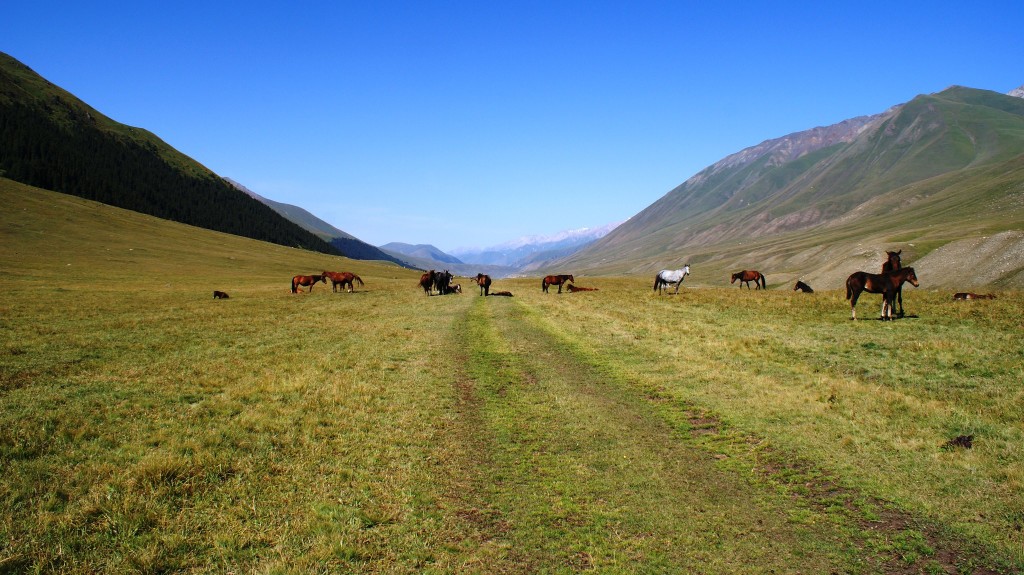
“We leave the trail, now. Here. Here. See light. Is yurt. We go there.” Yena pulled my handlebars to direct me off the trail toward a wavering speck of light in the far distance.
“What? No.” Leaving the trail was insane. Bad things happened when you left the trail. Besides, if we stayed on the trail it would lead us right back to the yurt we were at today. Unless the light was coming from the first yurt we’d stopped at earlier in the day, not the second one.
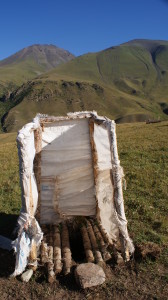 At the first yurt, a nomad woman had made cheese balls with her bare hands, and I could see her dirty handprints in the sour cheese. My stomach turned at the thought of putting it in my mouth. I pretended to enjoy my golf balls of cheese but palmed them into my pocket, intending to drop them in the outdoor toilet. But when I went to the squat latrine, I realized my cheese balls would be visible to anyone who looked in the shallow hole, so instead I feigned washing my hands in the stream and ditched the cheese there. They instantly sank to the bottom and stayed. The nomads had probably found my cheese after I’d left. They’d know it was my cheese. I didn’t want to go to the first yurt, but then I’d insulted the nomads at the second yurt as well. Plus, there was the issue of the horse.
At the first yurt, a nomad woman had made cheese balls with her bare hands, and I could see her dirty handprints in the sour cheese. My stomach turned at the thought of putting it in my mouth. I pretended to enjoy my golf balls of cheese but palmed them into my pocket, intending to drop them in the outdoor toilet. But when I went to the squat latrine, I realized my cheese balls would be visible to anyone who looked in the shallow hole, so instead I feigned washing my hands in the stream and ditched the cheese there. They instantly sank to the bottom and stayed. The nomads had probably found my cheese after I’d left. They’d know it was my cheese. I didn’t want to go to the first yurt, but then I’d insulted the nomads at the second yurt as well. Plus, there was the issue of the horse.
Following Yena, I stepped off the trail onto an impossible incline of slick wet grass. I turned my bike wheel sideways, as not even the brakes helped stop the downward slide. My front tire suddenly plunged straight down and stopped.
“What’s that?”
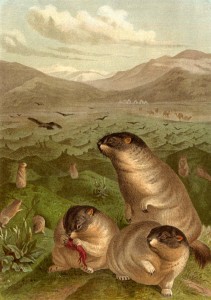 Yena shone her cellphone light. It was a marmot hole. She cast her light over the slope. Between where we stood and the far-off flicker from the yurt was a minefield of marmot holes, all just several feet apart. Before leaving for Kyrgyzstan I’d learned that the marmot was the second deadliest creature known to man, but that was because the marmot carried the flea responsible for the Black Death, or Bubonic Plague—not because their holes were waiting to trap and snap your leg bones like twigs.
Yena shone her cellphone light. It was a marmot hole. She cast her light over the slope. Between where we stood and the far-off flicker from the yurt was a minefield of marmot holes, all just several feet apart. Before leaving for Kyrgyzstan I’d learned that the marmot was the second deadliest creature known to man, but that was because the marmot carried the flea responsible for the Black Death, or Bubonic Plague—not because their holes were waiting to trap and snap your leg bones like twigs.
Using my bike like a senior citizen’s walker, I inched my way down the hill as slowly as possible. It was still too fast. A compound fracture out here would mean certain death. I wasn’t going to die at the hands of Muslims, as the Arizona prison guard had been desperate to prove—I was going to die by marmot.
Just then I became aware of motion, black moving against black, and far too large to be a marmot.
“Yena, what’s that? There’s something out there. No, not something, lots of things.”
We were being surrounded. Large shapes were closing in on us.
“I no know,” Yena whispered.
“Oh, it’s just cows,” I said, relieved.
Except that right then, we heard a deep, guttural, angry growl above us on the mountain. A T-Rex-sized beast was roaring and approaching fast.
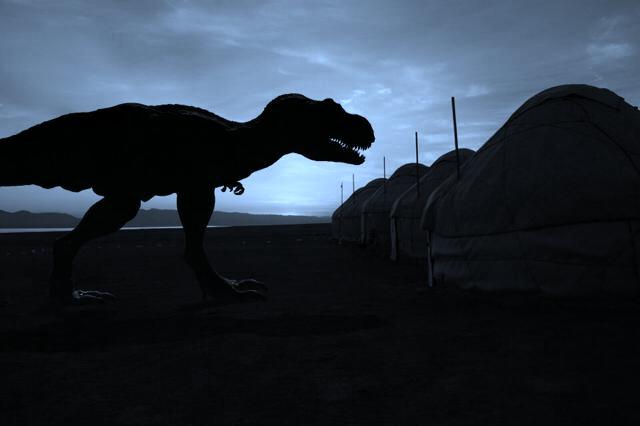
“Bull,” Yena cried out in dismay.
The bull circled. I couldn’t see it, but I could hear its hefty hooves impact the soil. It started to paw. It was going to charge. Yena and I made a barricade with our bikes. I heard myself panting—tight, short, breaths that sounded exactly like The Blair Witch Project whimper puffing. People really did make that silly noise. I couldn’t stop doing it. The Minotaur was bearing down on us. We’d be gored.
In a split second, the bull rounded our makeshift bicycle-fence. We were now on the same side of the bikes as him. Yena fumbled with her phone and the weak ray hit the bull’s eye. He charged. We scrambled around our bikes and held them in front of us, sidestepping with them, our bikes locked together in a panicked tangle of handlebars and spokes. I closed my eyes, bracing for impact. He thundered past and around us again. We were an awkward, gasping, four-legged matador.
“Call the nomads to help us,” I begged Yena.
She cried out in Russian, shouting her pleas toward the swinging lantern that marked the safety of the nearby yurt. Then all of a sudden, Yena let go of her bike and ran at the animal—all eighty pounds of her, shrieking threats as she waved her arms over her head and hurtled toward the horned mass of muscle.
I heard men’s voices to my right, speaking in Kyrgyz.
“Help us,” I whinnied.
Where were they? I was still making that pathetic whimpering-huffing noise.
A shepherd whistled a command. A lantern was lit. Dogs. Dogs and nomad men. Muslims. Muslims with guns. I was so happy to see Muslims with guns.
We were ushered into the family yurt. It was the second yurt.
“Kumis?” The mother offered me mare’s milk that had been fermented in a smoked goat’s stomach, again. I’d been up-chucking her kumis all day. Even in my dehydrated state, there would be no swallowing horse milk; the alcohol content was too low to be worth the risk.
I declined politely as Yena spun our adventure to the nomad woman who poured me the traditional half-full cup of tea, which I drank in one gulp. This happened ten times in a row. I wished she’d just pour me a full cup of tea. I wasn’t superstitious.
Her eldest son, whom I’d pointed my foot at earlier, eyed me from under his pile of colorful quilts. It was midnight, and the family lay on the floor, shoulder to shoulder. Where would we sleep? I wasn’t entirely comfortable wedging myself between the nomads on the ground; maybe I could spend the night huddled with the manure-burning stove and the teapot.
“I tell her about rock slide,” Yena said. “I tell her we cannot cross the pass and she say she know this. The same thing happened with Germans on bikes. They come down the mountain last night and sleep here.”
The nomad woman smiled at me with her gold teeth.
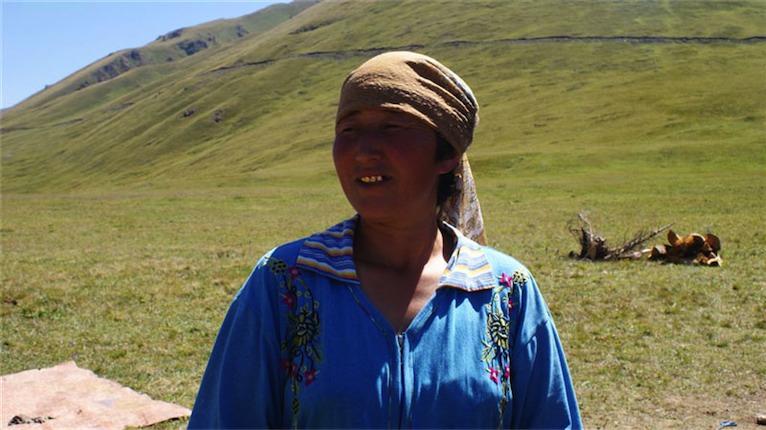
“Why didn’t she tell us that this afternoon?” I asked.
“I know. I no know. Is strange,” Yena replied. “We go now. They make bed for us in barn yurt.”
I was so thirsty. I hadn’t had nearly enough half-cups of tea, and as I followed several nomads back out into the freezing night, to the “barn yurt,” I was shaking with the beginning stages of hypothermia. My teeth rattled in my skull. Yena wrapped her icy, spindly arms around me. I don’t like being touched, but I could feel the warmth from her heart on my back, so I didn’t pull away. We shook together as nomads kicked the dogs out of the barn yurt and moved saddles, boots, and riding tack.
“I d-d-don’t mind d-dogs,” I chattered. The dogs ran off into the darkness in a barking frenzy, chasing something unseen.
Yena was handed a lantern, and we stepped into the yurt. I took off my poopy shoes—not that it mattered in the barn, but the nomads were superstitious about shoes—and one tipped over on its side. That was bad luck, too. Now I’d brought bad luck to the barn, as well. I quickly righted my offensive cycling shoe, but not before it was noted by the old man.
On the ground was a mat for us to share. Yena snuffed the lantern, and we crawled under the mountain of handmade blankets on the felt mat and spooned for warmth, feet of course pointed to the flap of the door, for luck. I heard the flap move, and then something else.
“Something is in the tent with us,” I whispered.
“No,” Yena answered.
Something sat down. “Maybe a dog came back,” I suggested.
The dogs responded by barking maniacally in the distance.
“Yes, something is in here,” Yena agreed.
We heard scratching. “Dog,” she sighed.
I suddenly had the feeling that it wasn’t a dog. It was the wolf. But I wasn’t afraid of wolves, I told myself.
Then I coughed. It was a horrible racking cough. Yena rubbed my chest.
No, she was rubbing my boobs. Yena was rubbing my breasts.
O.K., this was worse than wedging in with the family. Did she think I was paying for this service along with her guiding skills? It was beyond awkward.
“Yena,” I coughed, “I’m not scared of shooting stars anymore.” I barked painfully.
“Dis is good.”
“Yeah, now I’m scared of pulmonary edema.” I could feel my lungs filling with fluid. I choked on mucus. Yena rubbed my boobs again.
Day one was over—I hoped. But there were three more weeks to go.
________
Kirsten Koza is an adventure writer, speaker, and the author of Lost in Moscow. Her articles and photographs have been featured around the world in books, newspapers and travel magazines. Kirsten has mountain biked (badly) across twenty countries, was rewarded with a ham for the first mountain bike ascent up Romania’s Mt. Cocora, has driven the intercept vehicle tornado chasing for 19,900 kilometers, kayaked inches from alligators, was held at gunpoint in Honduras for twelve hours, was tattooed by a Rapa Nui tafunga, and has put testicles and penis and many other unusual food items in her mouth. To see pictures and read more about Kirsten’s misadventures visit www.kirstenkoza.com
*I have spelled Elena, Yena, throughout, as that was how I was instructed by her to pronounce her name. Alexey pronounced it Lena and Cholpon said it like Elena.
T-Rex added with Efexio.
This story was first published by Travelers’ Tales, in the 8th volume of The Best Women’s Travel Writing, a series of anthologies edited by Lavinia Spalding. (Click here to see the book on Amazon.)
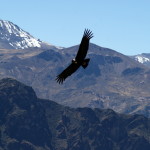
In a land where the Catholic conquistadors conquered and subjugated the native Incas, a small band of Peruvian neo-Nazis have found a way to blame all their troubles on the Jews.
The weirdness started when I ordered the wrong soup in Nazca, Peru. It doesn’t sound like a big deal, except that every two or three years I fly all the way from Toronto to Lima and then rent a 4×4 at the airport to drive to Nazca for a bowl of parihuela at La Encantada. I always tell people that I’m going to Peru for other reasons, for example, this time, the reason was to mountain bike down a 19,872-foot ultra volcano… Click this link to read my full story which was published in Perceptive Travel Magazine.

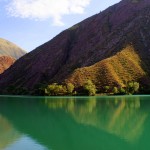
I’ve never told this crazy, camping, Kyrgyzstan story before. It still gives me the creeps. When friends and family ask what happened, I tell them they’ll have to read about it in the future. My adventure was just published in Perceptive Travel magazine, in the USA. I hope Dan Brown and John Grisham like it (that’s a joke – you’ll see after reading on Perceptive Travel). Buckle up for a wild ride: The Mountain Men Who Don’t Exist in Kyrgyzstan.
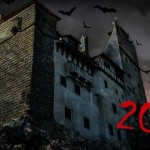
(Click to see itinerary for the 2018 Vlad Dracula Expedition)
FINISHED – see 2017 – The Dracula Expedition: Transylvania, Romania – Oct. 28 to Nov. 2, 2016. We have Dracula’s birth chamber reserved for our dinner party for 2017. Stay tuned for prices, dates, and itinerary for 2017 – we’re just waiting for Bran Castle to set their date for the party so we can set ours.
This tour is the most fantastic Halloween invitation I’ve sent out yet, and I hope you can join us. Our six-day (small group) Romanian adventure includes dining on Halloween night in the house where the real-life Dracula, Vlad Drăculea (known as Vlad the Impaler), was born in 1431. And we’ll also be guests at a party inside Dracula’s castle (built circa 1377) which was owned by Vlad’s grandfather (Mircea the Old) and was attacked by Vlad in 1460.
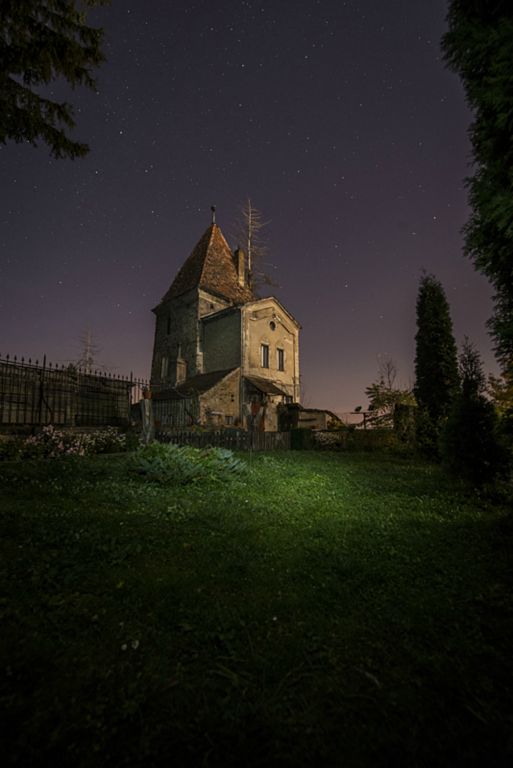
Our Transylvanian guide and expert (with whom I explored Romania with extensively), has designed a journey that will take us to his favourite local haunts: medieval castles with gruesome history, torture chambers, moody cemeteries, all contrasted with one of the most beautiful times of year to visit Romania which will be glowing in autumn colours. And Christopher Campbell, professional photographer (Chatelaine, Food Network, Harper Collins), will be guiding you during our escapades to capture photos of a lifetime, whether you’re using a mobile device, point & shoot, or a DSLR with multiple lenses. Plus he’ll be providing you (throughout the expedition and when you get back home) with digital images of your adventures.


Oh, and BYOC (“C” stands for costume) – the rest is included: all meals (you can go on a diet when you get home), accommodation, and transportation while on this phenomenal tour.
Kirsten Koza
Adventure Travel Writer
Writers’ Expeditions Host: info@kirstenkoza.com
(2016 itinerary, prices and early bird specials below. Save $400 US for a single or $800 US on a double when you sign-up now. Our expedition of eight participants sold out last year. We respond quickly to emails, and you should hear back within 24 hours – you can also contact us on Facebook at the Writers’ Expeditions page or message Kirsten at: kirstenkoza@gmail.com)
DRACULA EXPEDITION 2016 ITINERARY AND PRICES:
Day 1, Friday, October 28th:
– Pickup at Bucharest airport. – Next door to our hotel are the ruins of the Princely Palace, the castle that Dracula built in celebration of his own greatness or evilness. In the evening we’ll explore the historic pedways of the old town of Bucharest which was first settled in 70 BC and by the 1400’s was the wealthiest city in Eastern Europe. Then we’ll dine at The Beer Chariot, a spectacular 19th century restaurant which is always packed with locals and boasts an extensive menu of tasty Romanian dishes. – Overnight at Europa Royale Bucharest Hotel.

Day 2, Saturday, October 29th (drinks are on Dracula tonight):
After a hot buffet breakfast at the hotel, we’ll visit the Palace of Parliament, the second largest building in the world (after the Pentagon), and a legacy of a more recent “Dracula,” the communist dictator Ceausescu (executed in 1989). Then we’ll leave Bucharest for Snagov Monastery. In 1476 Prince Vlad Dracula was assassinated, and the monks of Snagov recovered his headless body and buried it on an island inside their church. Our driver will then take us across the Carpathian mountains to our lodge at Horia’s family farm where we can change into our costumes for the party at Dracula’s castle. You’ll soon see why Bram Stoker was inspired to create Dracula. This special event is the only time the castle doors open at night.
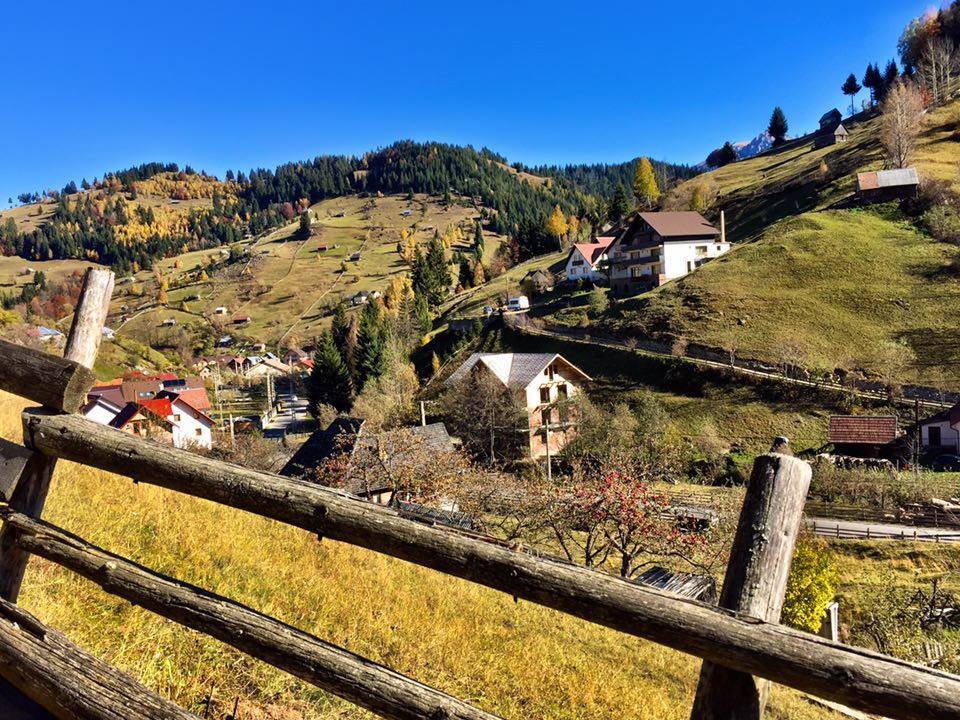
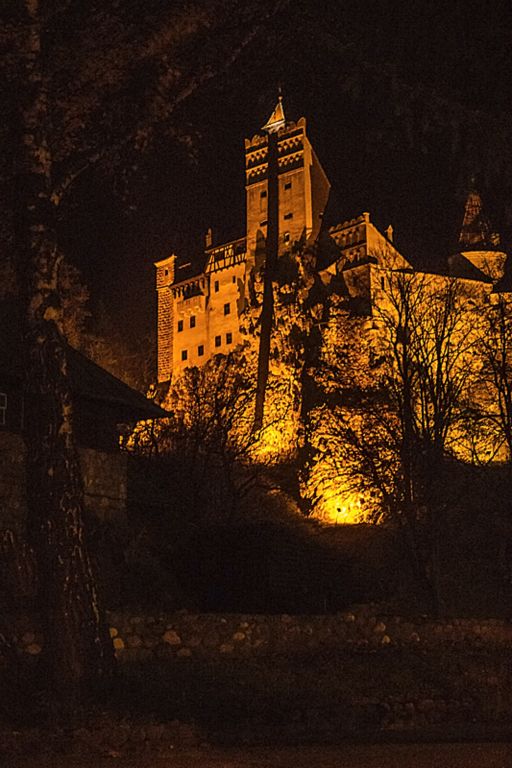
Day 3, Sunday, October 30th: After a hearty breakfast at the farm we’ll drive to Brasov where we’ll conquer the medieval ramparts, watchtowers, and Saxon churches (if they don’t conquer us). But best of all, this walled city boasts one of the narrowest streets in Europe. From Brasov it’s to Rasnov: where we’ll explore the 13th century, mountaintop fortress built by Teutonic Knights, and then we’ll return to Moeciu for another Romanian feast, a bonfire, hot wine and ghost stories, before heading to the cemetery for a ghoulish nighttime photography session.
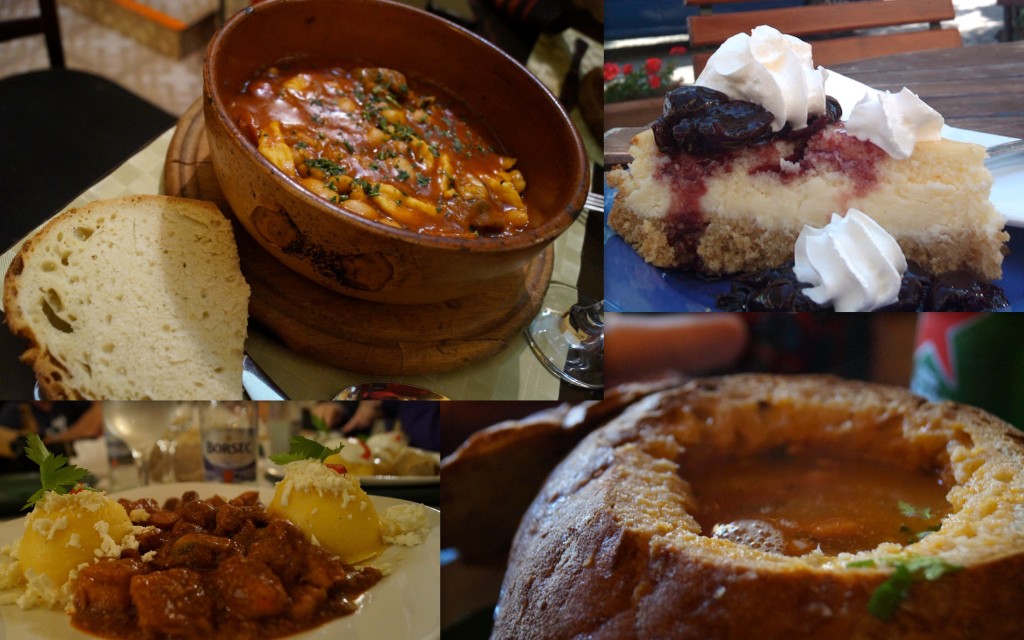
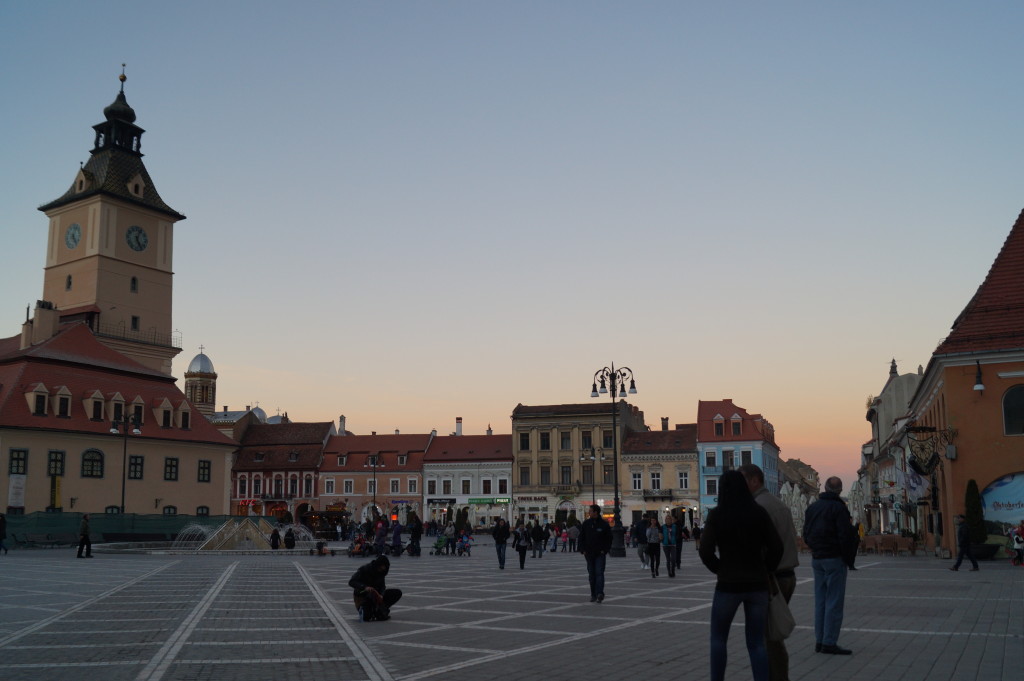
Day 4, Monday, October 31st, Halloween (tonight we dine in the house where Prince Dracula was born):
Today we drive a couple of scenic hours to Sighisoara which is on the UNESCO World Heritage list. We’ll be spending the night inside this preserved walled town, in a medieval hotel, across the street from the house where Vlad Dracula was born in 1431, which is where we’ll be dining this Hallows’ Eve.
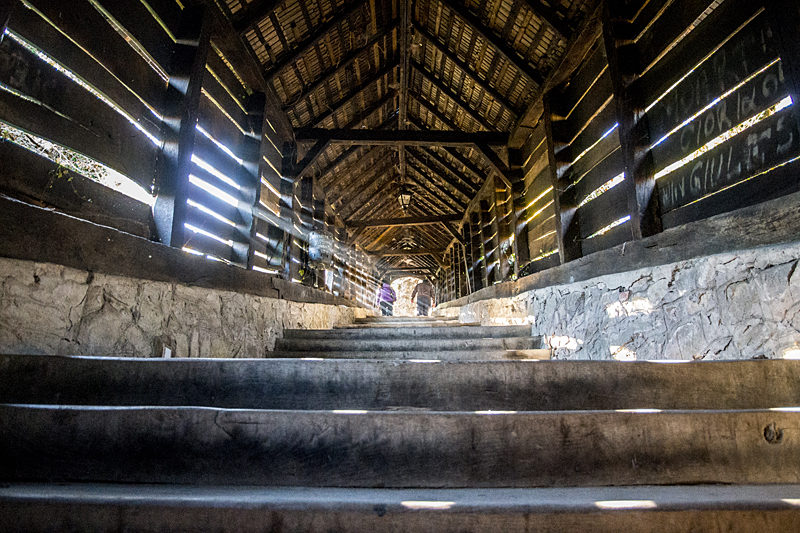
Day 5, Tuesday, November 1st:
The ruins of Poenari Castle are perched high on a rugged crag above the Arges river gorge. There are 1,480 stairs to Dracula’s “vulture nest.” One of last year’s participants worked it out to being 100 storeys. Now, if you really think you can’t make the climb–there’s a lovely lodge and restaurant down the road from the first step.
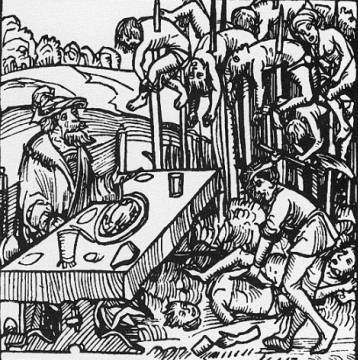
In 1462 Prince Vlad Dracula was sieged at Poenari by the Turks. He sent a message to the village of Arefu for help but his wife, terrified of capture, threw herself into the river far below before the rescuers arrived. The villagers came at night and smuggled the Prince across the mountains to safety and in return he gave them 16 mountains of pastureland, a reward the inhabitants of Arefu still celebrate more than 500 years later.
Our next stop is Targoviste which was the capital city of Wallachia until 1459. The townsfolk of Targoviste were blamed by Vlad for their involvement in the assassination of his brother by the Turks. Vlad moved the capital to Bucharest, killed nobles, and enslaved the town to build Poenari.
– Drive back to Bucharest.
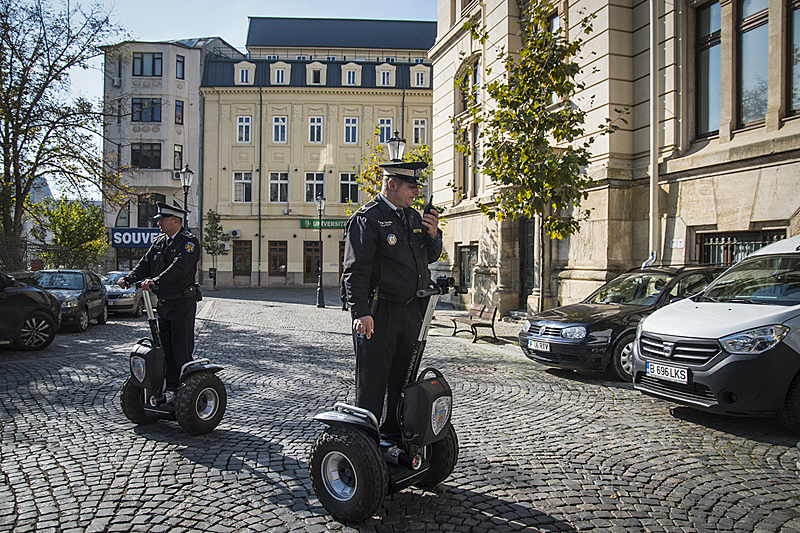
The tour ends in Bucharest at about 6 PM.
PRICES AND INCLUSIONS AND HOST BIOS:
If you book now the price is $1490 USD per person for a double (the single room supplement is just $165 USD for the entire trip). Regular tour price is $1890 USD. We can get some good deals if we book your trip now and are passing the savings directlly to you. Rates go up closer to peak season. Normally I encourage solo travelers to have their own snore and burp space, but on this tour, if you think your imagination might play games at night, you may want a roommate. – A $250.00 deposit reserves your spot. Please contact us first at: info@kirstenkoza.com
Inclusions:
- All accommodation (the delightful inns are small and unique – three star)
- All meals (don’t blame us if you gain weight – the food in Romania is fabulous, and you’re the one ordering what you want from the menus)
- Some alcohol (see itinerary)
- Photography sessions for those who wish
- Professional photographs of your journey
- Writing tips for any who wish
- All transfers and transportation on tours
- English speaking guide
- Our own driver and private vehicle
- All entrance fees to castles and museums
Exclusions:
- Airfare
- Alcohol (unless listed on the itinerary)
- Visa (not something for North Americans or Europeans to worry about)
Christopher Campbell: once again I’ve invited one of my favourite photographers (and one of the best travel companions you’ll ever meet) to lead our photographic adventures and share a lifetime of tips, tricks & technique. You have probably seen his images displayed on TV’s Food Network cooking shows or in publications as varied as Chatelaine, Spa Magazine, or Harper Collins cookbooks–and most definitely in ads–he’s the one you can blame for making you crave Absolut Vodka, Kahlua, that dew dripping glass of Gordon’s gin, Florida oranges, late night fast food at Wendy’s or McDonald’s (blame him for that), or test driving a Mercedes—that’s Christopher Campbell’s fault too.
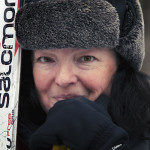 Kirsten Koza: I’m your host and expedition designer and am a professional adventure travel writer, author, humourist and journalist. I’m currently on the book tour for the Travelers’ Tales (USA) anthology I edited: Wake Up and Smell the Shit: Hilarious Travel Disasters, Monstrous Toilets, and a Demon Dildo. I ruthlessly pretest Writers’ Expeditions trips and find the best local guides, tour operators, and unique adventures, so you can have a great experience.
Kirsten Koza: I’m your host and expedition designer and am a professional adventure travel writer, author, humourist and journalist. I’m currently on the book tour for the Travelers’ Tales (USA) anthology I edited: Wake Up and Smell the Shit: Hilarious Travel Disasters, Monstrous Toilets, and a Demon Dildo. I ruthlessly pretest Writers’ Expeditions trips and find the best local guides, tour operators, and unique adventures, so you can have a great experience.
I write on topics as varied as going inside the largest Syrian refugee camp, bullfighting, cannibalism, tornado chasing, mountain biking, dildos, dictators, Putin, gluten, and politics. My stories and photographs have been published in books, newspapers and magazines around the world, and I’ve even made the front page of Kyrgyzstan’s national newspaper. I’m the author of Lost in Moscow: A Brat in the USSR.


